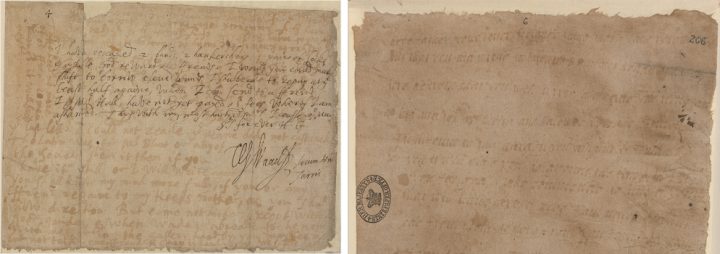
Welcome to our second activity for British Science Week, how to make invisible ink! We have included written instructions, a ‘how to’ video, and a downloadable activity instruction sheet. In this activity we make ink using lemons, but you can make invisible ink using other citrus fruit like oranges with the same recipe.
How to make invisible ink instructions
Watch the ‘how to make invisible ink’ video on Youtube
Download the ‘how to make invisible ink’ activity instruction sheet (PDF, 0.19mb)
Download the ‘how to make invisible ink’ activity instruction sheet (Accessible PDF, 0.03mb)
Civilisations have been using invisible ink for thousands of years to carry secret messages. Ancient Romans, like the poet Ovid advised people on how to use milk to write secret messages in their writings. Messages would be written in milk, which was invisible, then the person receiving the message would pour coal dust onto the paper and the hidden words would appear on the page. Fruit juices, like lemons, were first used as invisible ink in the Arab world more than 2500 years ago, in 600 AD, and then continued to be used in Europe through to the 18th Century.
Our activity ‘how to make invisible ink’ will replicate how people wrote secret messages millennia ago, with a little bit of help from modern technology!

On the left a letter sent from Henry Garnett to Ambrose Rookwood alias Thomas Sayer, SP 14/216/2 item 242. On the right, part of a letter sent from Anne Vaux to Henry Garnett, SP 14/216/2 item 244.
At The National Archives we have several examples of secret messages written on letters in our collection. Some of our most famous records with secret messages are from the Gunpowder Plot. The Gunpowder Plot, which involved Guy Fawkes, was the failed plot to blow up King James I and the Parliament in 1605. You can find out more about these documents below and your adult can read more about how we used scientific imaging to help read the orange juice letters in our blog ‘Smoke and mirrors: Revealing the Gunpowder Plot through heritage Science’.
